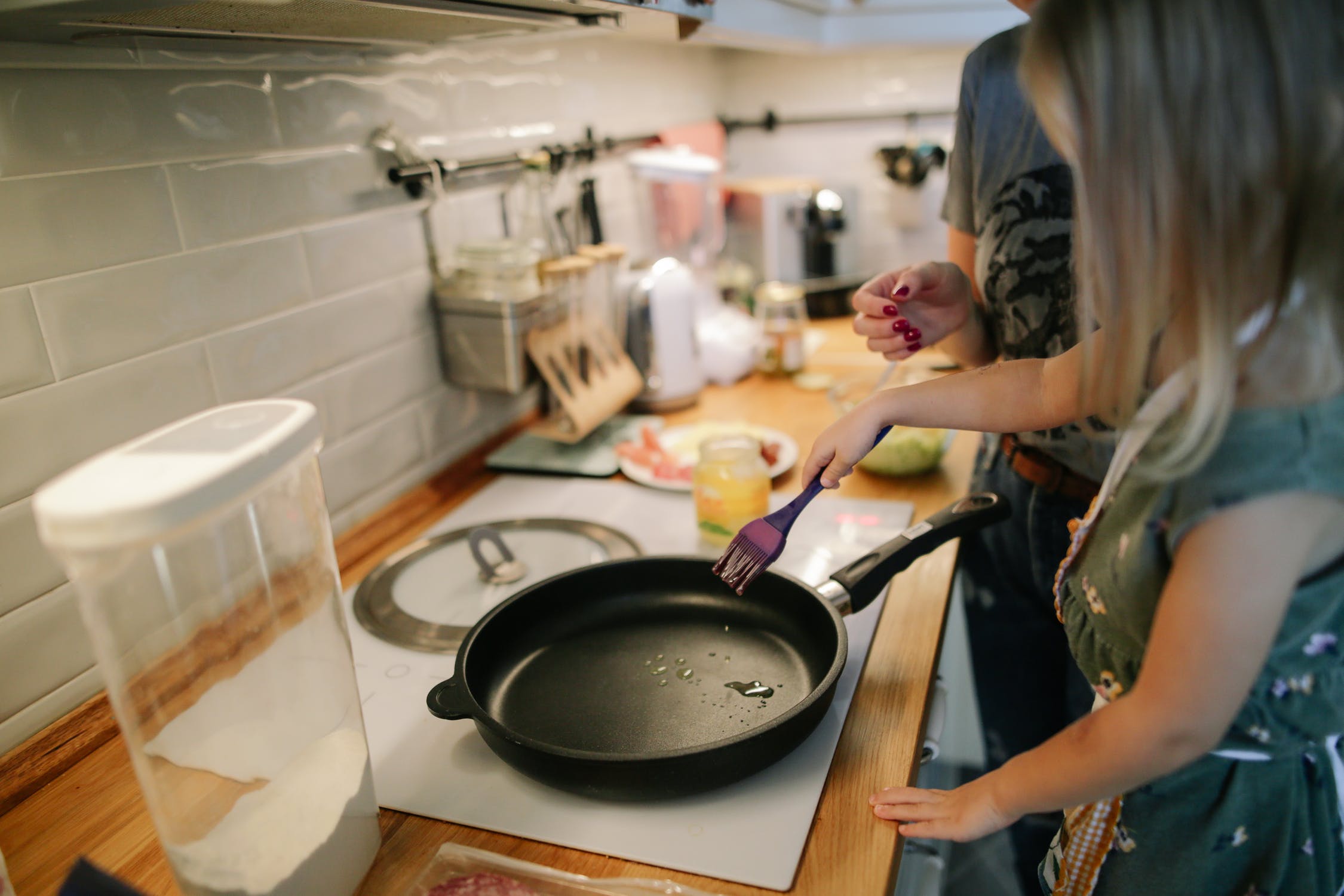Cooking is a generational pastime that brings families together across cultures and countries. When you gather in the kitchen, you are creating memories that your children will remember for years to come. It’s important to have a safe space for your kids to interact with you and each other while making delectable creations. Here are some tips on how to kid-proof your kitchen so you can focus on creating culinary masterpieces together.
Check Your Stove
Gas burners can be a risk if little ones pull the dials and allow the gas to flow freely in your home, electric cookers as well can be a source of major burns. However
Induction compatible cookware has been a staple in culinary schools for many years and is now gaining popularity with the general public because of its built-in safety features and fast-cooking technology. Induction stovetops heat only when a compatible pan or skillet is placed on the burner, otherwise it turns off again. It gets hot fast and also cools remarkably quickly. Induction hobs can be easy to install, depending on the type you get you may need a spare countertop to place it on it as well as an electrician to get it connected to the home’s power grid. You can even get induction range cooker units to replace the gas one. All in all induction cookware is ideal for youngsters who want to learn about cooking and parents who want to keep them safe from burns or gas leaks.
Review your Dining Room
Most dining rooms tend to be established adjacent to the cooking area. Since the dining room is also the serving and eating space, you should check over some potential hazards here. Dining room chairs are often used for little ones to stand on while helping you at the kitchen counter. Make sure whatever kind of chair you are using is sturdy and not in need of repair. Foldable chairs are not recommended. If you want to be extra safe, there are several platforms made just for kids who want to help in the kitchen without the risk of injury.
Savvy Small Appliance Use
Small appliances can seem safe at first since most sharp or movable parts are usually contained within a tight space. However, safety precautions are still necessary to protect curious kids from potential hazards. One of the easiest things you can do is invest incord shorteners or do some manual cord shortening at home. This keeps cords from becoming tangled and ensures they are out of the way of small hands.
Look Into Your Dishwasher
Most dishwashers have limited security features and are more accessible to small children because they are placed at ground level. One of the most important things you can do to keep your kids safe is to empty the dishwasher immediately after it has finished its cleaning cycle. Never leave sharp utensils in the dishwasher. Instead, you can wash them by hand and then immediately store them. Or you may prefer to put them in the dishwasher just before you start the load and then take them out directly after. So long as they don’t linger at child height, you’re in the clear.
Refrigerators and Freezers
Most kitchens have both a refrigerator and a freezer. These are very active places and contain a lot of interesting things for your children. If you have an older appliance, consider checking the seals on the doors and undertaking some general maintenance. A proper functioning door will keep a strong seal and will not be easy for your child to open. Consider also removing any door magnets as they are small and can be a choking hazard. As an added precaution, keep glass bottles and other breakables towards the back of the top shelves to ensure they’re out of reach for little ones.
Following these steps will allow you to maintain an accessible kitchen while also protecting your kids from avoidable hazards. Encouraging your little ones to be active in the kitchen is wonderful for family bonding and creating happy memories.



